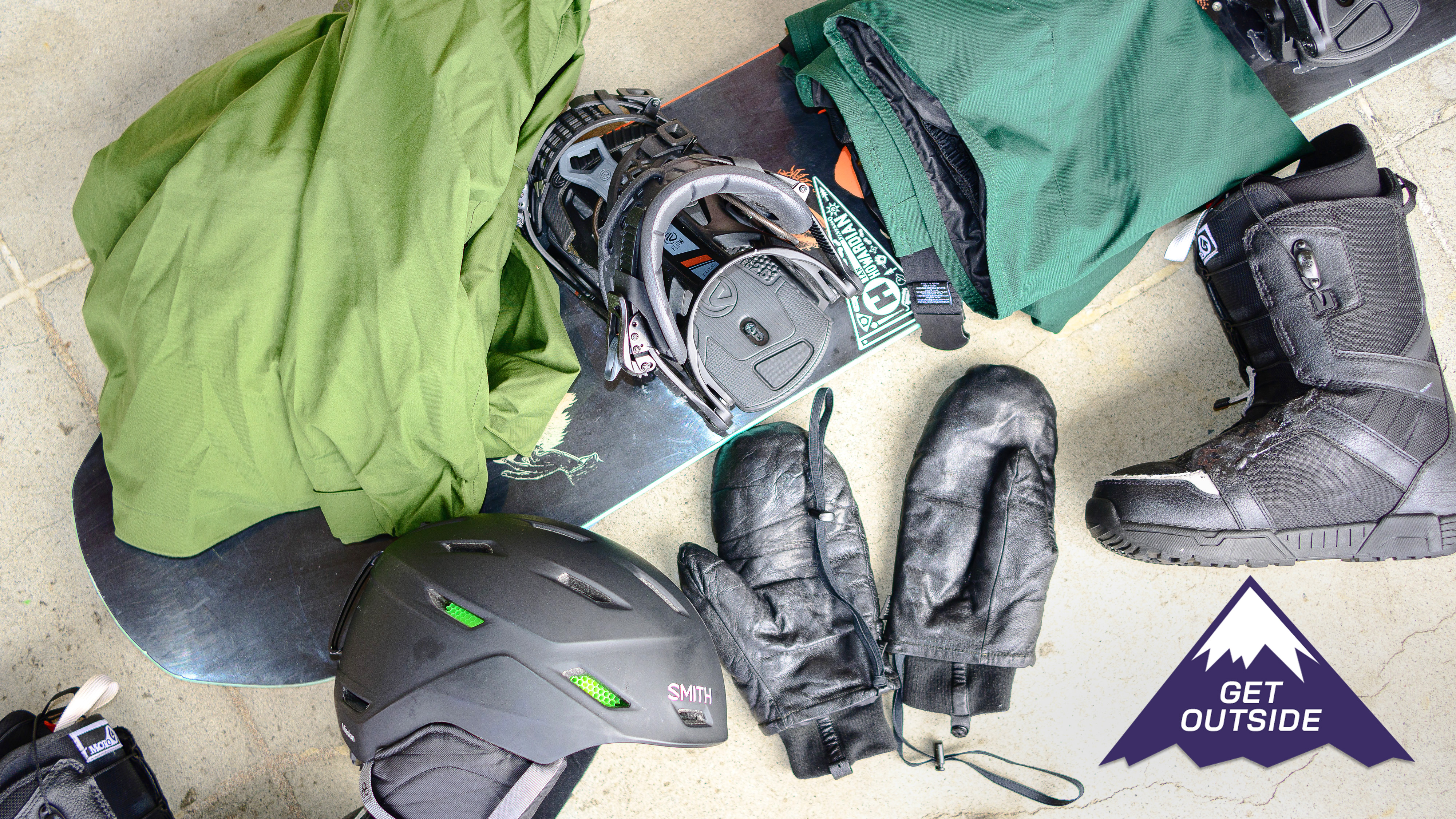
With the ski and snowboard season wrapped up for most folks in North America and Europe, it's time to look forward to all the warm-weather activities ahead, like hiking, biking, camping and more.
Not so fast. Before you transition out of cold-weather adventure mode, it's important to prep your winter gear — including hard and soft goods — for the offseason. Doing so will protect your investment and ensure everything from your helmet to your skis is in pristine condition when the snow starts falling again.
For advice on storing ski and snowboard gear in the offseason, I chatted with Jonah Drescher, a former skier for the U.S. Ski Team and current manager for outdoor retailer, Christy Sports in Arvada, Colorado.
How to prep ski and snowboard gear for storage
Before diving into what you'll need to prep your gear for the warmer months — hint: it isn't much — it's worth keeping in mind the No. 1 thing you shouldn't do come season's end, which is "throw your skis, board or boots in a closet or the garage where you're likely to forget about them," says Drescher.
Have you already made this mistake? It's not too late to right your wrongs. However, you may want to move quickly because rust and mold don't mess around.
Once you've properly aired and dried all your equipment — a clean microfiber towel works well on boards and skis — you may want to consider some sort of storage bag for your hard goods.
For soft goods, especially stinky ones, you'll want to pick up an outerwear-friendly detergent, like Nikwax Tech Wash and some wash-in waterproofer. Again, Nikwax is the industry standard.
Beyond that, some fresh-smelling dryer sheets to stuff in boots and gloves are all you'll need to get the job done.
How to store ski and snowboard gear like a pro
- Clean and prep your board or skis
- Wash and prep soft goods
- Prep your boots, helmets and goggles
- Choose a suitable storage location
Read on to see full illustrated instructions for each step.
1. Clean and prep your board or skis
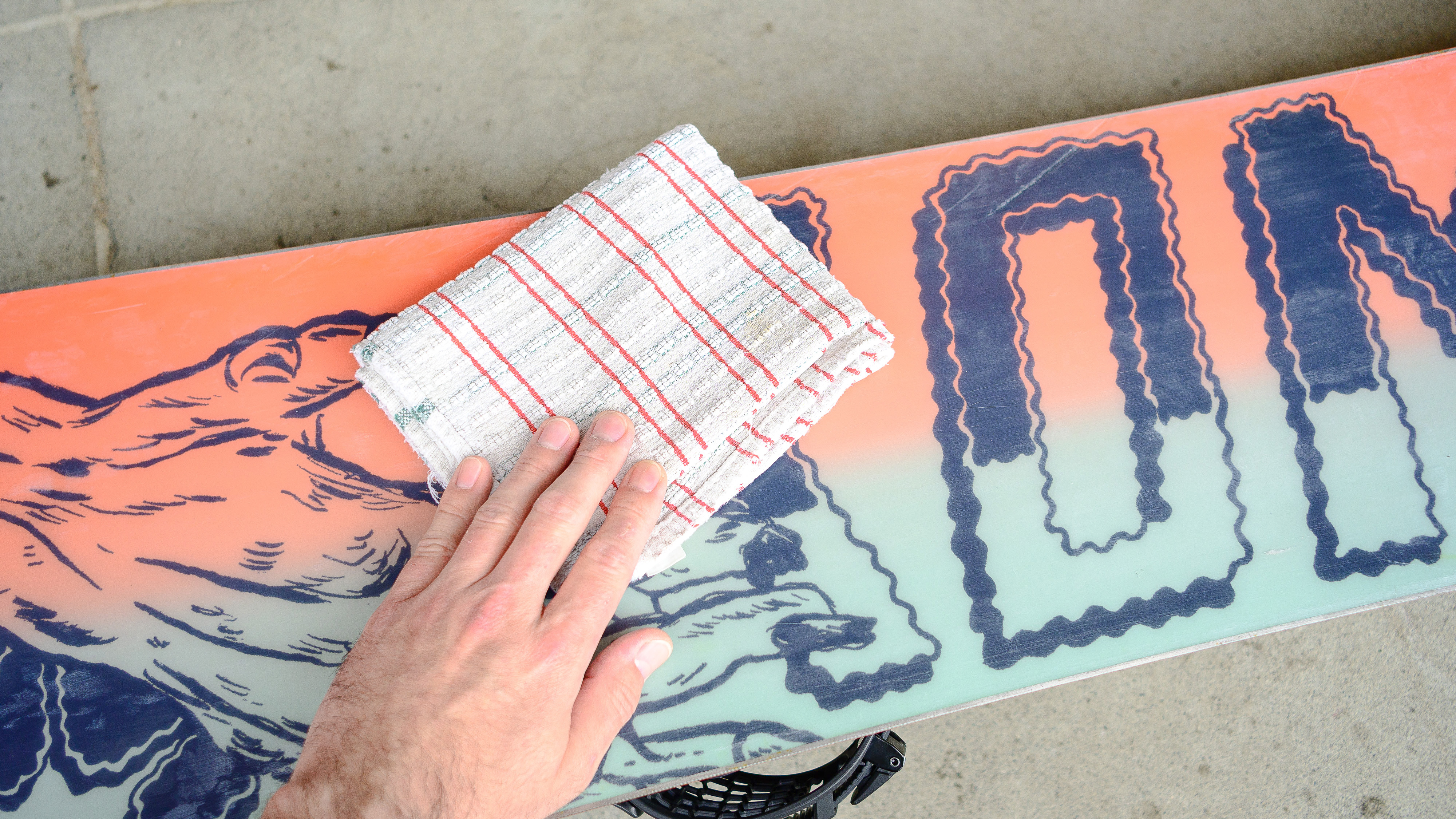
This may sound like a no-brainer but "you should definitely wipe down and clean all your gear after your last day on the mountain," says Drescher. Moreover, he suggests a regular maintenance schedule to keep your skis or board in good condition.
This is especially important when prepping gear for off-season storage. "If you are a 30-day-a-year skier you should tune your skis three times a year, or about every 8 to 10 days of skiing or riding," Drescher says.
Another suggestion — which admittedly I've never considered — is bringing your board to a shop and having them apply a thin layer of wax to the bottom of your board and skis, along with your edges, for protection. However, only a thin layer is necessary.
Also, you'll want to fully scrape, clean and rewax your board or skis right before the start of next season. Here's how to accomplish that in seven easy steps.
2. Wash, prep and store soft goods
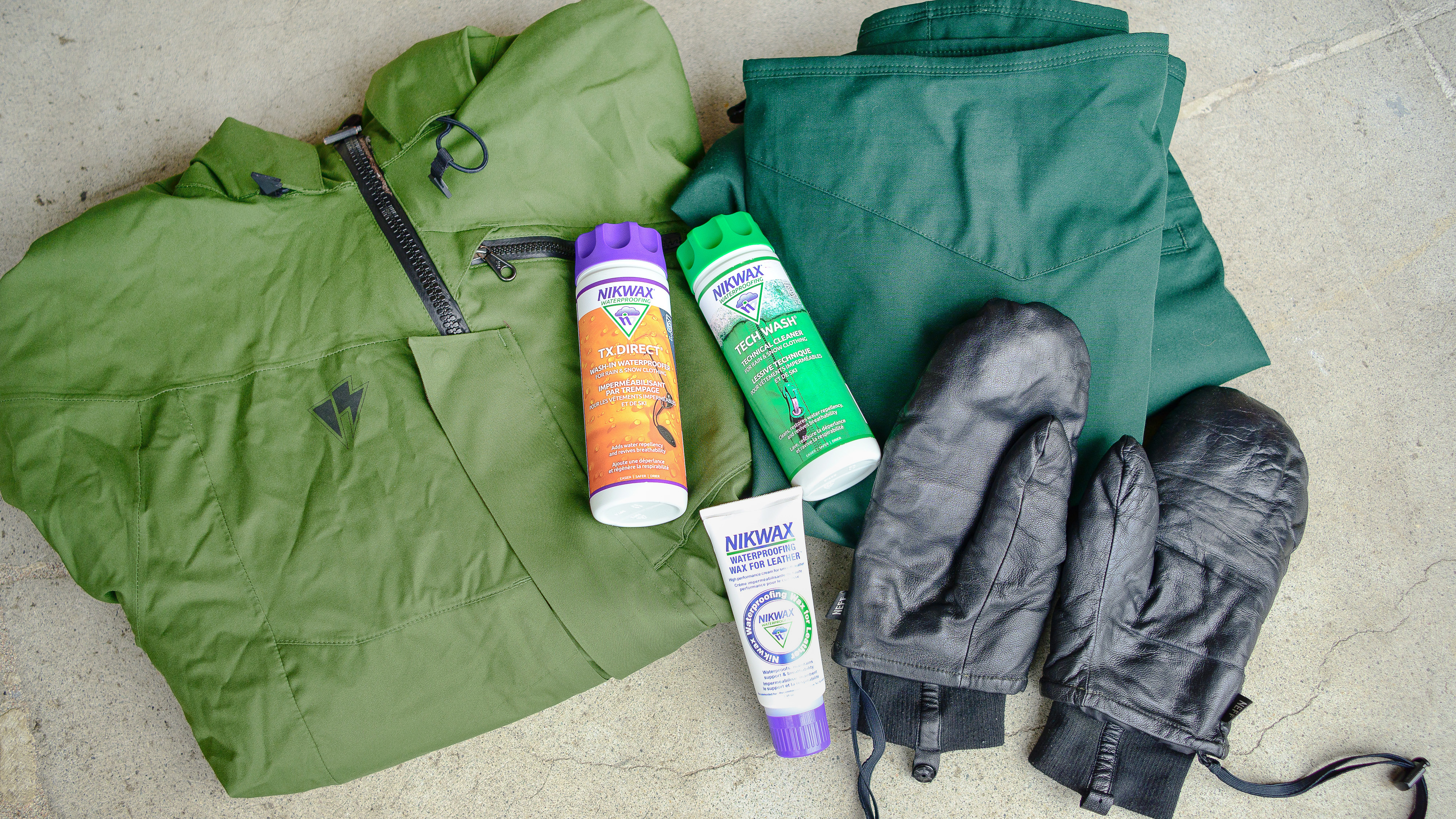
For items like long underwear, ski socks, and thermal shirts, "ensure everything is dry and clean before storing them for the summer, as this will extend the life of your gear," says Drescher. "If you have had a great year and your stuff is dirty, you can wash and waterproof your gear to get ready for the start of the next season."
However, soft goods with waterproof properties, like jackets, ski/snow pants and gloves shouldn't be treated as ordinary laundry. Instead, use detergent and a wash-in waterproofer designed for the job. Need some help? Here's how to waterproof your jacket like a pro and never get soaked again.
Not all ski gloves can be washed, so check the tags and proceed with caution. However, any pair can be cleaned with a damp cloth. Afterward, consider a waterproof treatment. These come in both spray and wax forms. For leather gloves, which I prefer, use wax. Lastly, stick a dryer sheet in each glove to keep 'em smelling fresh until next winter.
3. Prep your boots, helmets and goggles
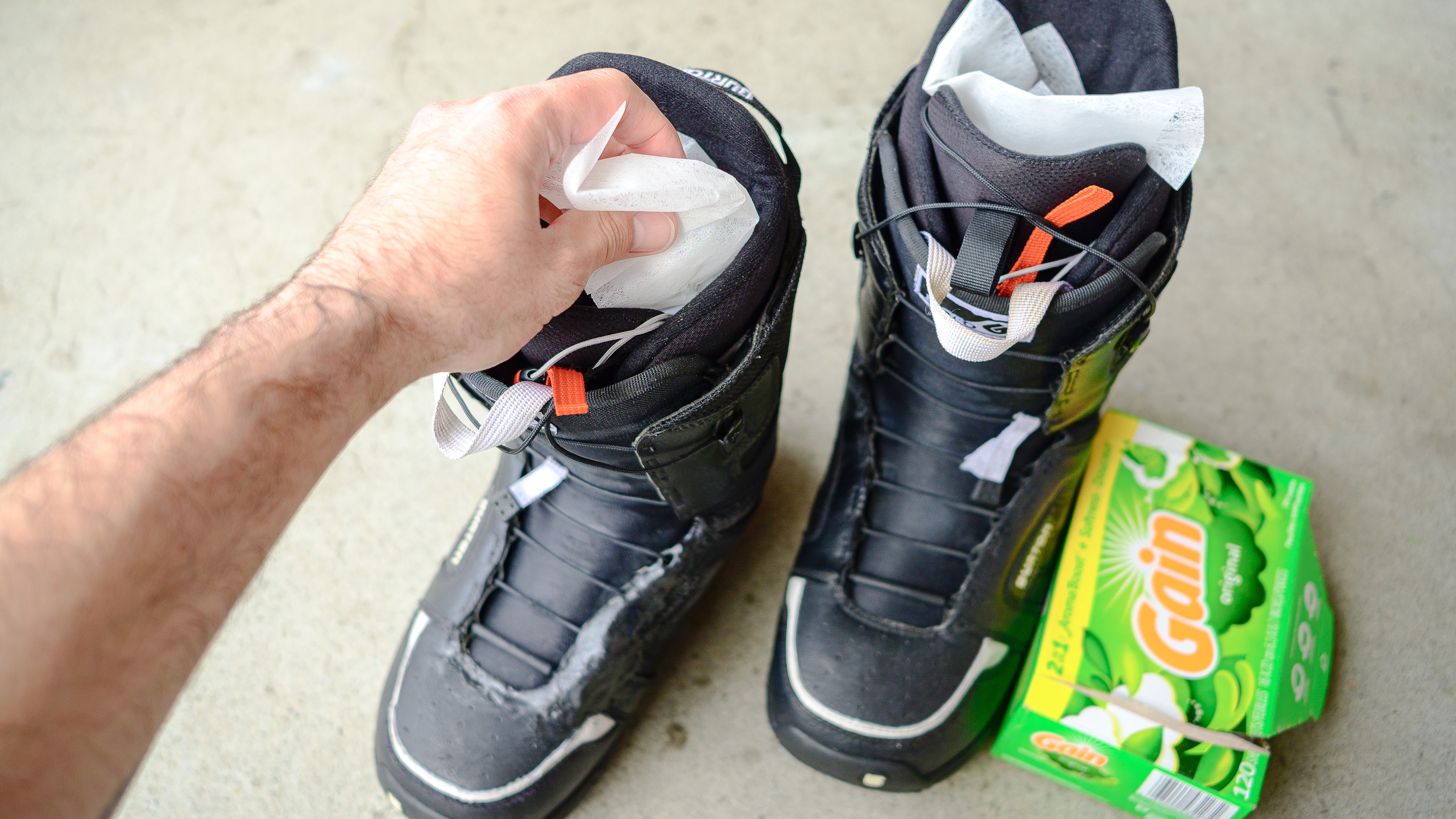
"Do not forget to clean, dry, and buckle your boots also — this will help them stay in good shape and avoid getting musty and stinky over the summer," advises Drescher. Beyond that, he suggests you put a dryer sheet or two in each boot for extra freshness.
Be sure to air out your helmet and goggles before storing them as well. For the former, wipe the exterior with a damp cloth to remove any grime. The interior padding of many helmets can also be removed and washed on a gentle cycle, but be sure to double-check the manufacturers' recommendations before proceeding.
Use a dry, clean microfiber cloth to clean your goggle lenses. Because most ski goggles are treated with an antifogging spray during manufacturing, it's best to avoid any harsh cleaners or sprays.
4. Choose a suitable storage location
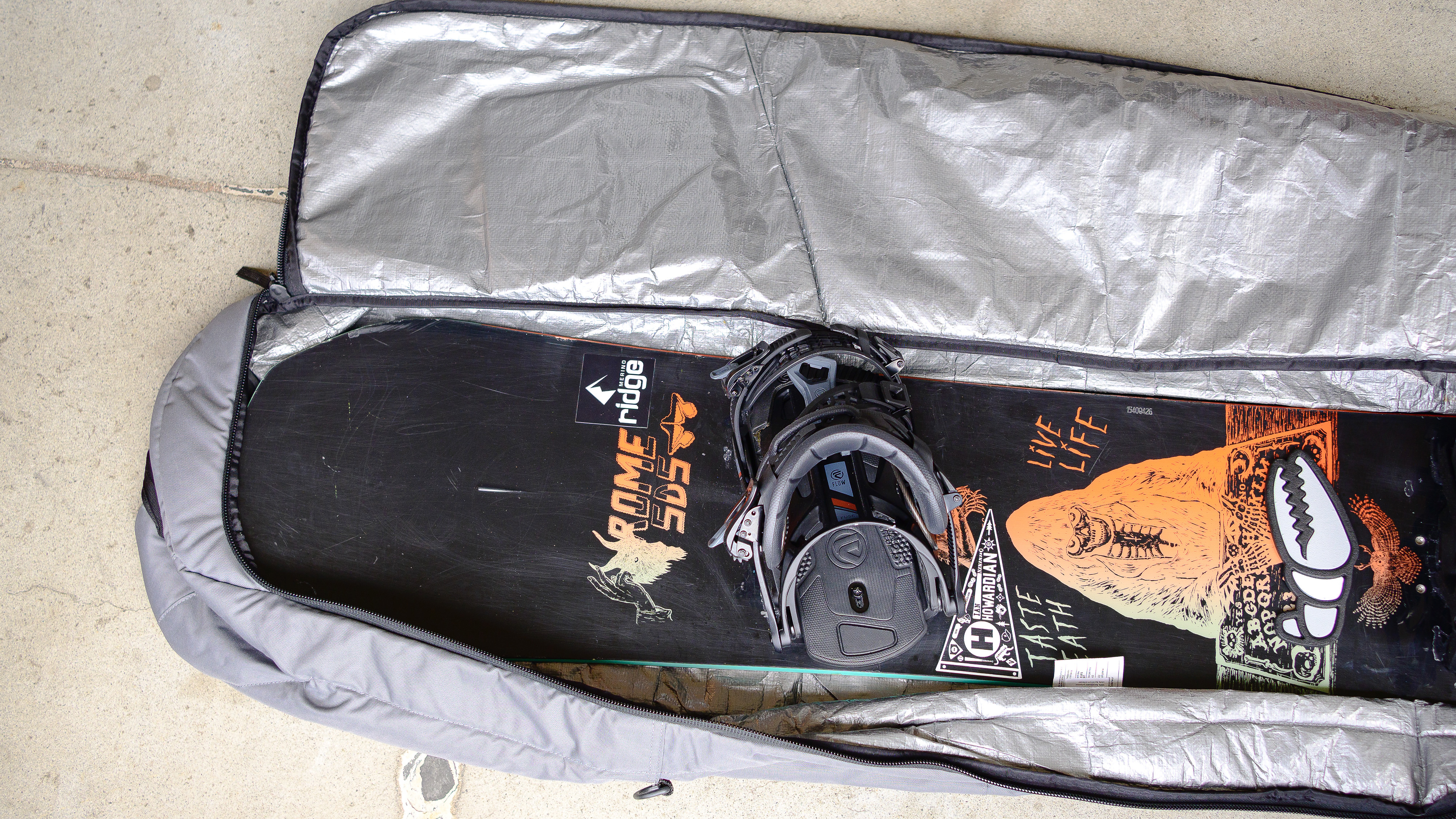
Regardless of your storage setup, there are several things Drescher says we can all keep in mind. "Try and store your gear in a dry, ventilated area, avoid damp areas such as dirt crawl spaces, and do not store your gear next to hot water heaters, HVAC, or sprinkler systems as these typically create moisture and can promote rust on your gear," he says.
The garage is an OK place to store items, however, it's best to hang equipment from the wall or ceiling, rather than leaving them on the ground. For this task, Drescher recommends Gravity Grabbers.
"A storage unit or shed can also work as a place to store your gear, but do not store it on the ground — hanging is best. Make sure that whatever space you use is weatherproof," says Drescher. A dry closet or attic can also work, but only if there's decent ventilation, he adds.
Another option, for hard goods in particular, is investing in a padded, waterproof bag for storage. Not only will this help it avoid knocks and bumps but it also makes traveling to and from the mountain easier.
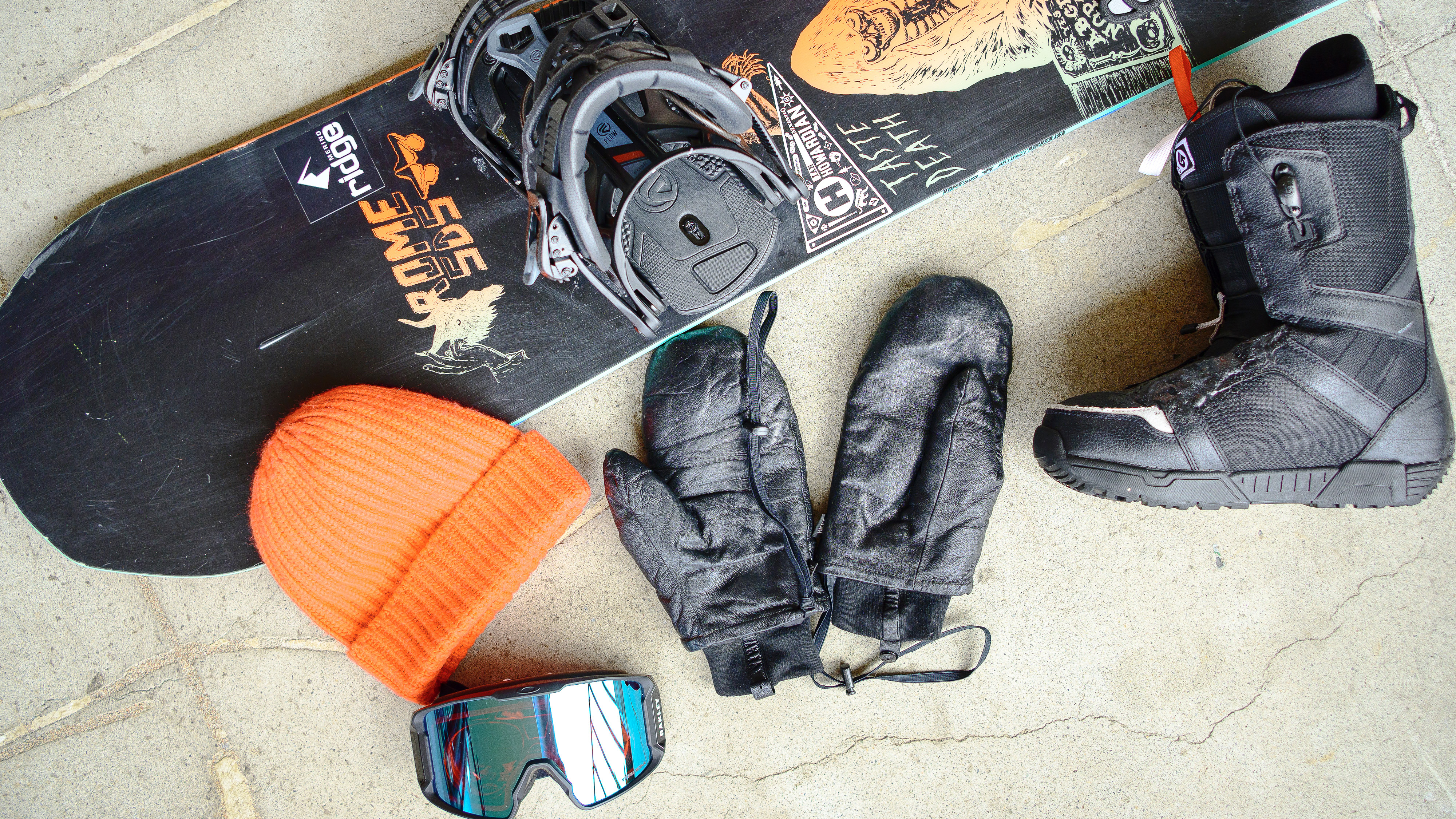
Ultimately, common sense is your best friend when it comes to storing your ski and snowboard gear during the warmer months. Beyond that, hanging your cleaned gear in a cool dry place is the best way to ensure it's ready to go when you need it next.
"Remember you will always get back what you put in, Drescher says. "In other words, a little preparation will go a long way to keeping your valued equipment or gear in good shape and it will last longer."







